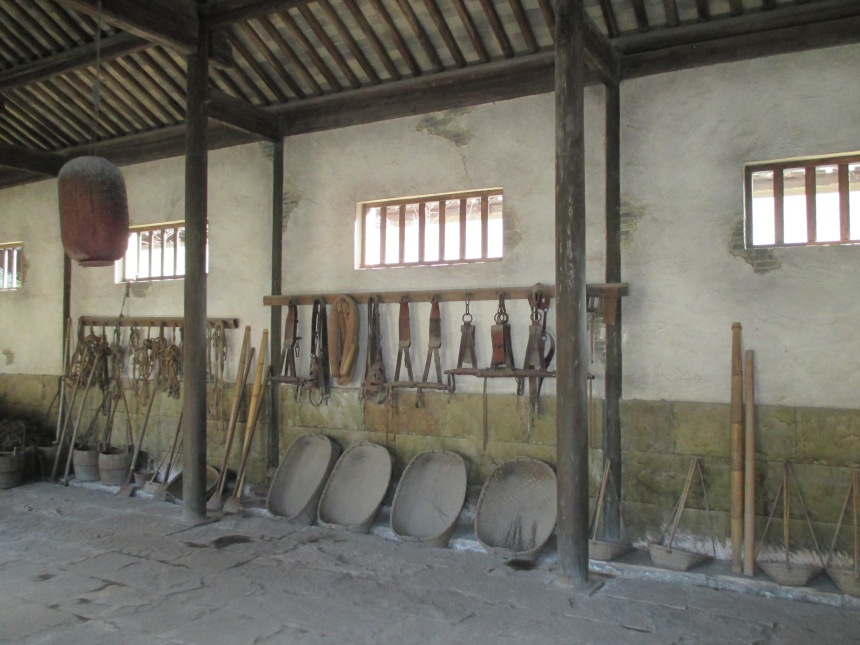A writer of historical fiction dwells in the kitchens, barns, boats, farms, stables and workshops of many eras. They must make their characters homes and work spaces their own. Although often the product of our imaginations, these places must still be historically correct. We spend a great deal of time delving deep into the internet or sitting in libraries researching how they may have looked and the tools and implements our characters may have used.
One of my favourite past-times when travelling is to visit historic buildings and museums. Rather than the most magnificent furnishings it’s often the structural details, tools and implements I like to photograph. I never know when this information might come in handy.
Several years ago we spent a week in Nanjing, primarily to visit our son who was studying there for a semester. Of course, I couldn’t let the visit go by without checking out the complex of buildings officially known as the China Modern History Museum but usually called the Presidential Palace of Nanjing. Many of these buildings date back to the Ming Dynasty, but were also used as a military base and government headquarters by the Taiping Revolutionaries in the mid-nineteenth century. Hence the name.
The complex houses beautiful buildings and an exquisite garden, but the area I enjoyed most was the stables. I imagined the soldiers coming and going and the stable hands tending the horses and their equipment. Simple tools that were an integral part of peoples’ lives. Just what I love. I have filed the photos and information away for a story idea I have in the back of my head.

Like the Scholar’s House in Fuzhou and the writing implements on the scholar’s desk, which appear in my forthcoming novel, The Boy With Blue Trousers, the stable in Nanjing will make an appearance in one of my books sooner or later, I know.

